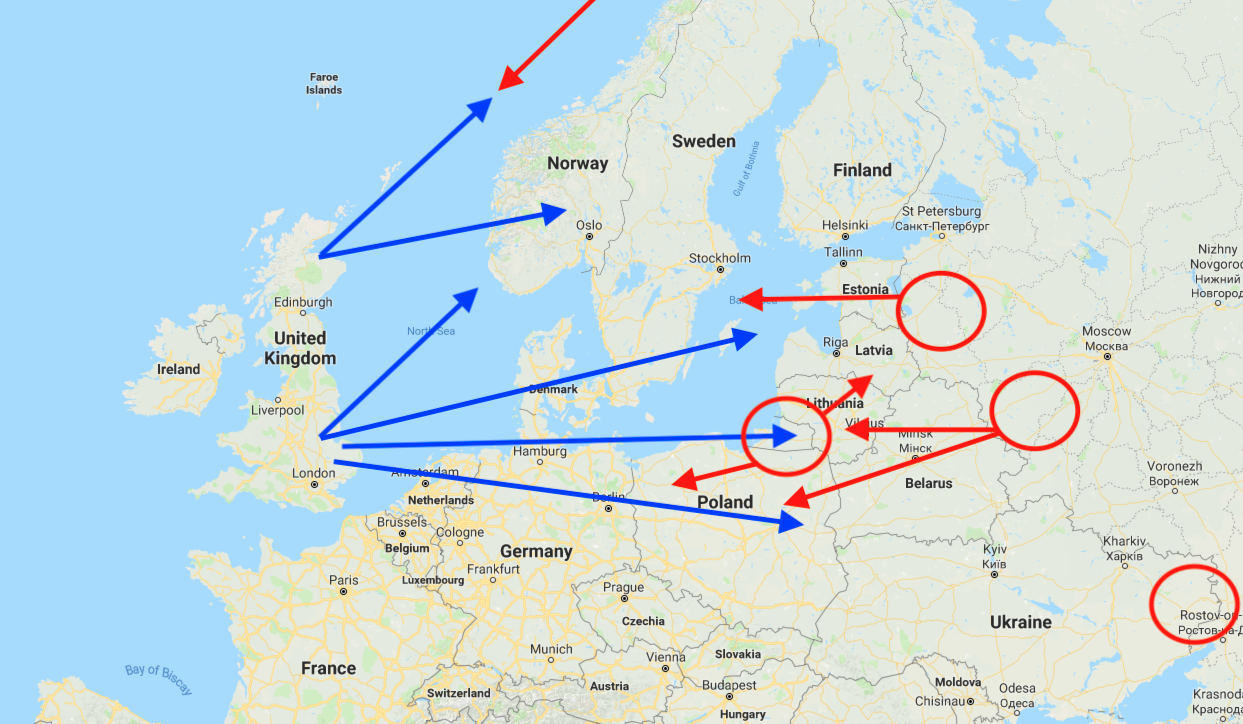Launching from British air force bases on Tuesday, British air force F-35s and Typhoon fighter jets, French air force Rafales, and U.S. Air Force F-15s simulated strike operations against Russian invasion forces.
The exercise, Point Blank, is designed to strengthen NATO interoperability in strike fighter operations. But the primary tactical interest of the exercise is improving NATO’s ability to achieve air superiority against powerful air and air defense adversaries. USAF group commander Col. Jason Camiletti explained to British Forces TV that the exercise included “simulated [enemy] surface to air missile sites,” to give aircrews experience in a “high-end contested environment that … we’ve been lacking in: we haven’t had to face over the past couple decades.”
But it’s clear that the NATO air force contingents are most focused on Russia’s highly capable S-400 air defense system. It’s a relevant concern in that Russian war planning for an invasion of Europe is focused on a rapid assault to quickly establish strongholds in the Baltic states or Poland. The Russians would then flood those strongholds with long-range missile, artillery, and air defense platforms such as the S-400 in hopes of deterring a NATO counteroffensive. Here, the Russian strategy assumes that NATO states such as Germany and smaller partners like Belgium, Italy, and Spain, would be unwilling to support a counteroffensive, for fear of casualties that might be suffered. In turn, they believe that a rapid knockout blow would encourage NATO to sue for a Russian-favored peace.
Sadly, the Russians might be right in at least part of that assessment: It is notable that Germany did not participate in Point Blank. But Point Blank is manifestly good news. Because the U.S., U.K., and France are willing to fight together, they will ultimately win. And when it comes to specifics, it’s pretty clear what the air planners had in mind here. Have a look at my annotated map below:

The origin points for the blue arrows represent the RAF or USAF fighter-bomber bases in Britain. Not all of them were used in Point Blank, but in the event of a Russian blitzkrieg invasion, the U.S. and U.K. would surge fighter squadrons from these bases in order to defend the Atlantic and North Sea, the Baltic Sea, and NATO forces in the Baltics or Poland. France and other NATO allies would also launch their own air forces.
The red circles represent Russian military strongholds or likely jump-off points for any invasion. But the key circle here is the most central. Because that is Kaliningrad, a Russian enclave between Poland and Lithuania, which Russian President Vladimir Putin has spent the past decade turning into a massive fortress. And to degrade or defeat any Russian invasion in its early stages, NATO would have to break, or at least isolate, Kaliningrad. Of course, Putin knows this, and so he has flooded Kaliningrad with S-400s and related systems. That’s ultimately why Point Blank is crucial — so that NATO’s big three can annihilate Russian forces there, if necessary.
That is not to say that everything is hunky dory with NATO’s ability to deter or defeat a Russian invasion. Russian electronic warfare and long-range ground strike capabilities are significant. And while the U.S., Britain, the Baltic states, Poland, and France (sort of) recognize the threat Putin poses, other NATO allies are less reliable. Germany weakens NATO, and many other members starve their defense budgets. Although slightly improved, Turkey’s president, Recep Tayyip Erdogan, also remains problematic.
Nevertheless, coming on the back of a far larger NATO exercise, Point Blank proves that the major allies are ready to fight and can win.

